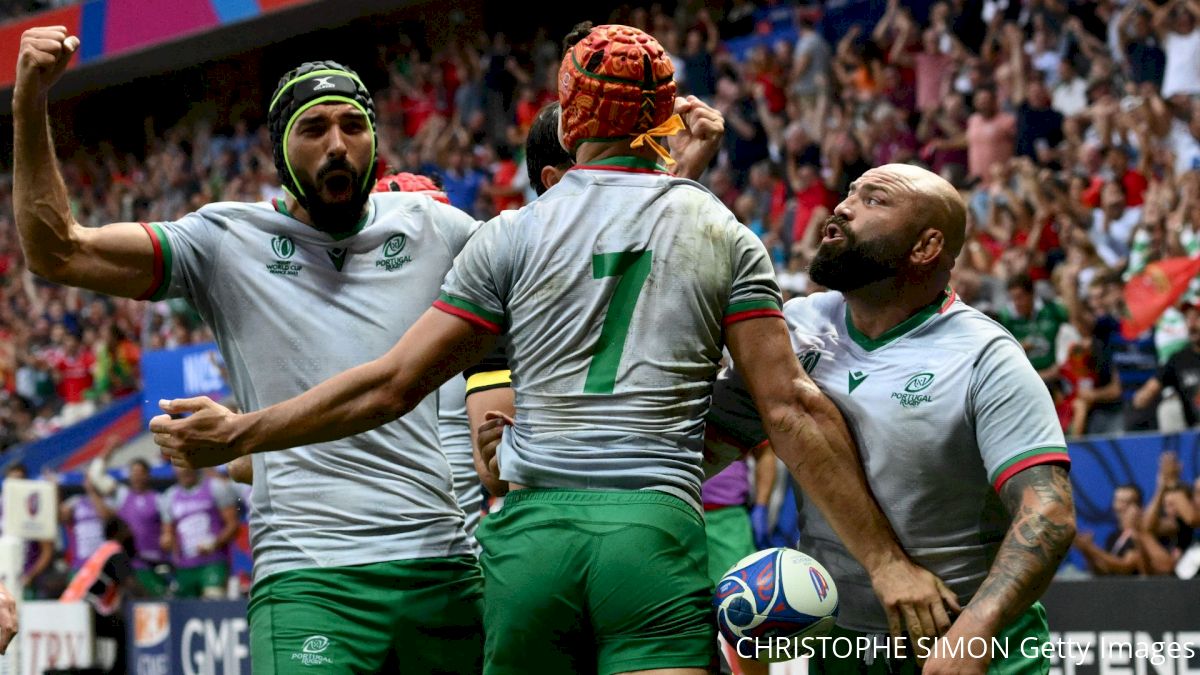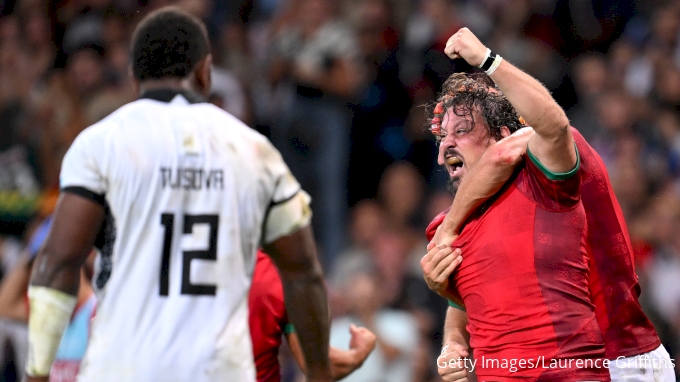A Dream Scenario For Each Of The So Called Tier 2 Nations
A Dream Scenario For Each Of The So Called Tier 2 Nations
Unlock the future dreams of the Tier 2 rugby nations. Discover unique scenarios for each team as we explore their promising pathways and aspirations.

As the warm evenings of Europe's astonishingly hot summer give way to the cooler dark evenings of autumn, so too do the pool stages of the 2023 Rugby World Cup to the do-or-die knockout rounds.
They grew from week to week as they pushed two of rugby’s traditional powers in Wales and Australia, before earning a draw with Georgia. All of this was laying the building blocks for the pièce de resistance, which was the victory over Fiji.

While Portugal undoubtedly was the Tier 2 story of the tournament, fellow emerging nations Uruguay and Chile proved without doubt that they belong at the game’s top table, too. How this looks in reality remains to be seen, given the rise of the likes of Georgia, Fiji and Japan in recent years.
Those three nations would appear to be ahead in the queue to join one of the game’s major annual tournaments.
If this rugby writer was in charge of the global game, the vision would be simple: Fiji and Japan should join South Africa, New Zealand, Australia and Argentina in the Rugby Championship, while Georgia and Portugal join the Six Nations. Simple, right?
Well, not exactly.
The first point of Fiji and Japan joining the Rugby Championship feels like an inevitability, given the strength of the club game in Japan and the addition of the Fijian Drua to Super Rugby.
As was the case with Japan in 2019 when the Sunwolves were playing in the Super Rugby tournament, the Fijian Drua supplied the bulk of Fiji’s players for this year’s tournament, with 18 of the 33-player squad featuring for the club.
Fiji international Isoa Nasilasila, who plays for the Drua, said: "The Drua was brought in to help the younger generations in Fiji to give them a pathway to the Flying Fijians, and it's good to see that working out.”
For the two Six Nations hopefuls, Georgia finally has a team in the European Club competition, as the Black Lion Club will feature in the EPCR Challenge Cup this coming season.
Portugal, on the other hand, will need to ensure it has at least one club capable of competing at this level.
Ideally, both countries would have their teams feature in a league, such as the ever-expanding and rapidly developing United Rugby Championship.
Clearly, a strong domestic club setup is crucial for any sustained success, and this likely will be a matter of urgency for the respective countries and World Rugby alike.
It would be remiss, not to mention Samoa and Tonga, which both showed continued improvement throughout the tournament. Like Portugal and Georgia, these countries need investment into a club structure before any consideration can be given toward inclusion to a competition at the quality of the Rugby Championship.
However, it is worth noting how close Samoa ran England in their final pool match, a point head coach Seilala Mapusua was keen to point out.
"It was a great contest between two proud countries," Mapusua said. "You're basically seeing an expanded Six Nations and Rugby Championship."
— Samoa Rugby (@SamoaRugby) October 7, 2023
The coach didn’t mince his words when discussing what would be needed for Samoa to take the next step, saying, "We seriously need to look at our program and the exposure we can get to these tough matches against Tier 1 teams. There is a lot of work to do.”
On the South American front, a link with Argentina, the USA and Canada would appear logical, albeit it would take some maneuvering to include a full-strength Argentinean side. More likely, the competition could feature a second-string Jaguares team that would be shorn of Los Pumas’ European-based players.
Based on reporting surrounding the expansion of the Rugby World Cup to include four more teams, it would appear necessary for World Rugby that more teams feature frequently at the highest level.
For clarity's sake, it is worth noting that the World Cup has invested more than $50 million in performance development programs over the past five years.
Given the performances of teams such as Fiji, Georgia, Uruguay and Portugal in particular, this year’s tournament is proof that the investment is paying off. Thus, it would appear only logical that these efforts would be doubled down ahead of the proposed expansion in 2027.